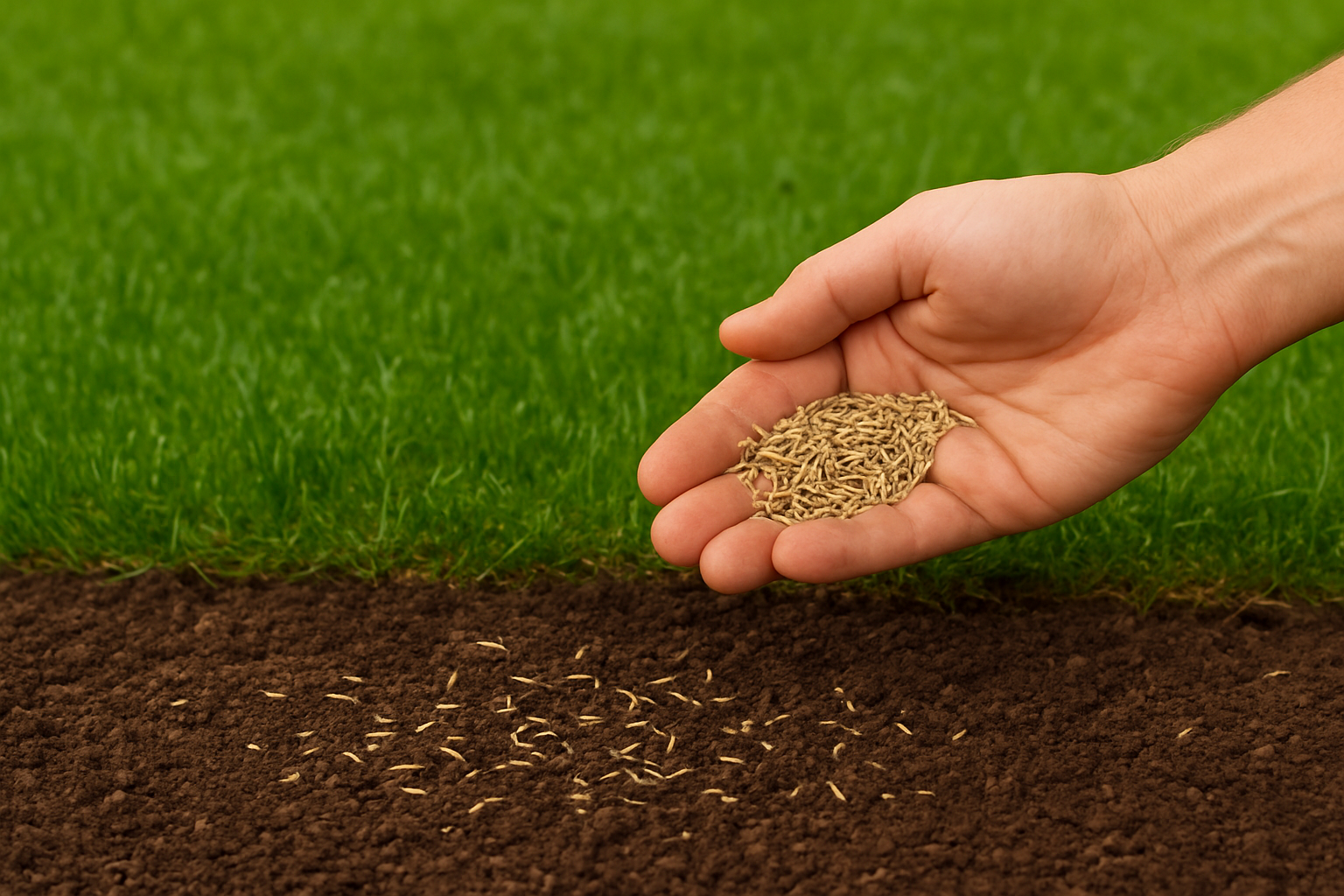
![]() Growing a lawn from seed is an affordable and rewarding way to achieve a lush, healthy garden. The key to success lies in timing, preparation, and ongoing care.
Growing a lawn from seed is an affordable and rewarding way to achieve a lush, healthy garden. The key to success lies in timing, preparation, and ongoing care.
Grass seed can be bought at any time of the year and stored until required, where-as turf has a short shelf life and should be laid as quickly as possible.
 When to Sow Your Lawn
When to Sow Your Lawn
The best times to sow a new lawn are mid-spring and early autumn. Soil temperatures are moderate, and moisture levels are stable — perfect for germination.
- Seeds typically germinate within 7–10 days under ideal conditions.
- Avoid frost, extreme heat, or drought when sowing.
 Choosing the Right Seed Mixture
Choosing the Right Seed Mixture
Different lawns have different needs. Choose a blend based on how your lawn will be used: Preparing the Seed Bed
Preparing the Seed Bed
- Clear the area of all weeds and debris.
- Loosen soil to 15–20 cm deep using a fork or rotovator.
- Add compost or manure and mix well.
- Allow the soil to settle, then remove any new weeds.
- Rake, level, and firm the surface evenly.
- Apply a general-purpose fertiliser before sowing.
 Sowing & Watering
Sowing & Watering
For even growth and coverage, sow at approximately 35–50 g/m².
- Sow in two directions — lengthways, then widthways.
- Lightly rake to cover most of the seeds with soil.
- Keep soil consistently moist but avoid overwatering.
 Aftercare & First Mowing
Aftercare & First Mowing
- Compact gently once seedlings reach about 3 inches tall.
- First mow when grass reaches 7–8 cm, trimming only one-third of its height.
- Avoid heavy use during the first season.
- Protect from birds using netting or reflective deterrents.
 Frequently Asked Questions
Frequently Asked Questions
-
How long until I can walk on my new lawn?
- Wait until the grass has been mown several times and feels firm underfoot — usually 6–8 weeks after germination.
-
What if my lawn is patchy?
- Reseed thin areas, water consistently, and protect from birds for even regrowth.
